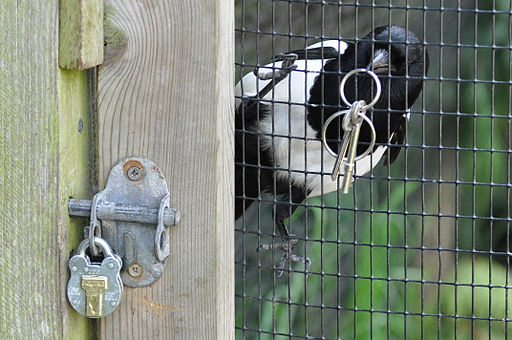Magpies like to steal shiny, metallic objects to make their nests, right? That’s how the age-old story goes. Rossini even penned an opera on the subject. The birds, part of the crow family, are often celebrated for their intelligence. Magpies are capable of storing food over winter and remembering its location, even remembering which other birds witnessed the storage of the food (paper here). This empathic behaviour has been suggested to evolve in birds alongside the ability to recognise themselves in mirrors (see here and here for more details). The magpie’s cousins in the crow family have also been shown to use sticks and leaf stems to retrieve food (paper here).
The evidence that magpies are intelligent birds is extensive, and it does not necessarily require a scientific study to know this. Perhaps that’s why we’ve always thought that they are attracted to shiny objects, as if there’s some sort of innate value to them that all creatures share. It’s probably a safe bet to say most shiny things are metal, and metal, at least to humans, is typically worth more than dirt, twigs or leaves. It turns out, though, that the tales of jewel-stealing magpies handed down through the generations might have little basis in reality. In a scientific study performed with both wild and captive magpies, no statistically significant favouritism was being shown by the birds to metallic objects in either case 1. Indeed, they showed behaviour which suggests they were unsure of the objects, taking extra care of their safety in the presence of such items.
So, perhaps the value we as humans give metal is not the same as the value assigned to it by magpies. Building a nest requires materials that are strong, warm and commonplace. It seems like straw and wood isn’t about to lose its place as the material of choice for birds.
Edited by Debbie Nicol
References
- From the university and here is the paper.

